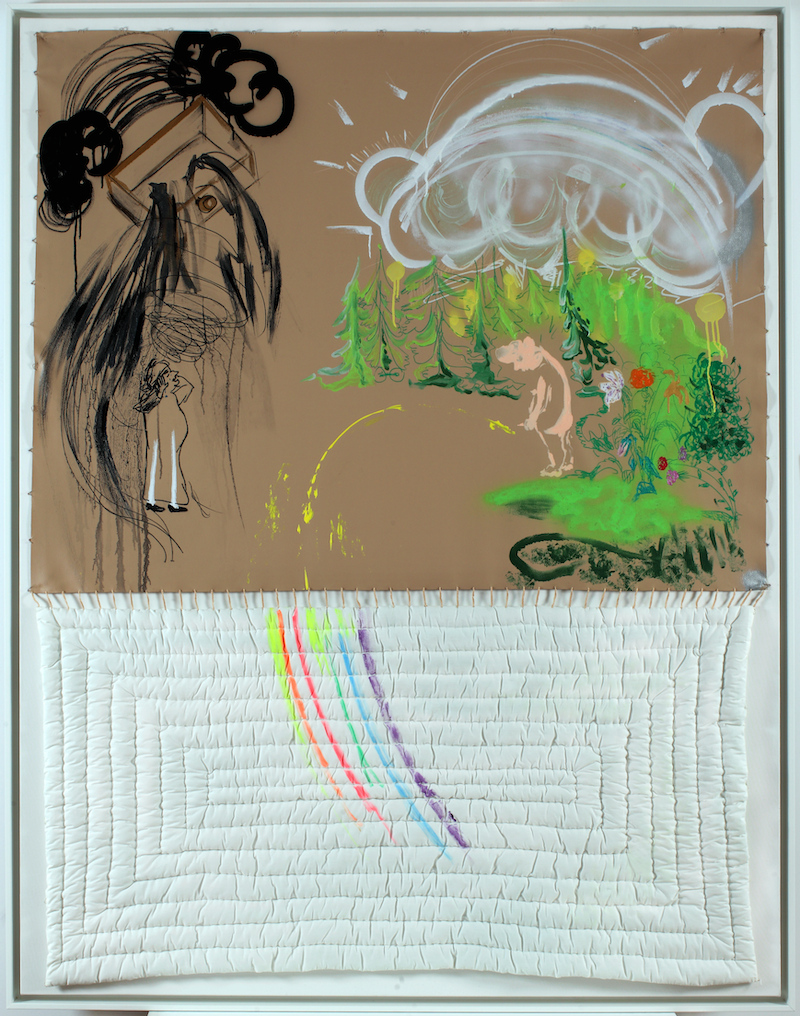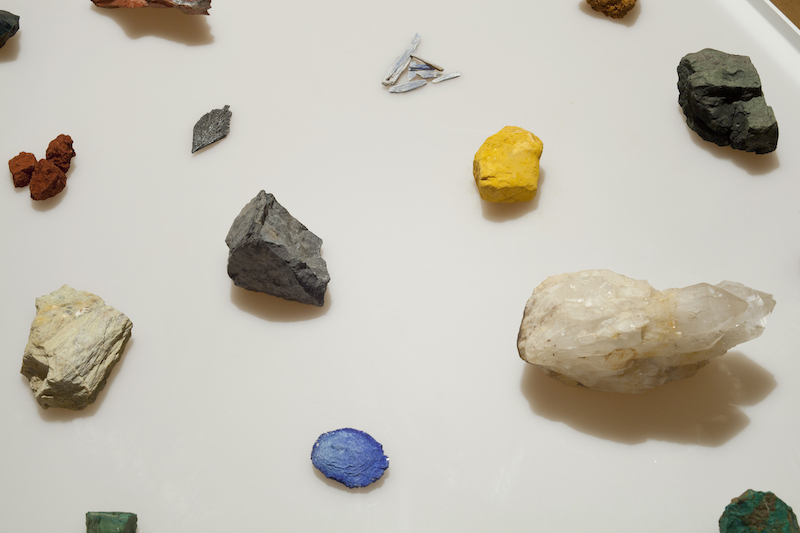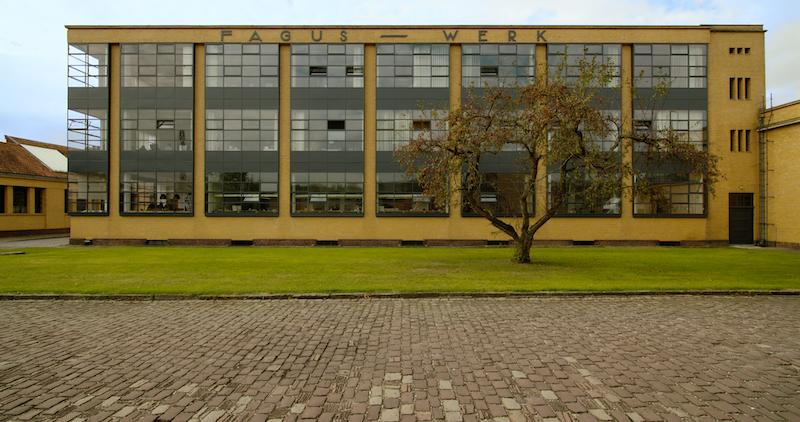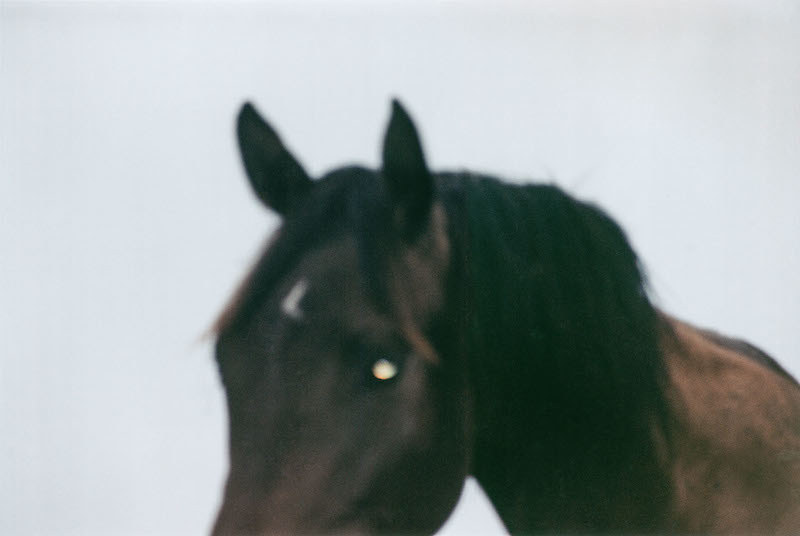Elsa Salonen, "Stories Told by Stones (The Narrators)," mineral stones, earths, pigments ground from them, laboratory glasses, 2018 © the artist
Fossils are older than we can even imagine sequences of time. Imagine they could speak. They store historical information about our planet, which seems to fall apart in this very moment, in the age of the anthropocene – the human era. This current epoch is defined by the enormous impact human beings have on the earth's ecosystems and its geology. In light of the dystopian future this era promises, there seem to be only two sets of reactions left for us: resignation or activism. The Finnish, Berlin-based artist Elsa Salonen chose the latter and her activism – which is an essential part of her artistic research – involves giving the earth and all its natural materials a voice to speak. She distills colours from flowers, and extracts pigments from stones, she uses bones, earth, meteorite dust, seawater from places all over the planet, to reveal something about the knowledge these materials store. In our interview, which we initially commenced in 2015 and continued in 2019, Elsa told me how she makes traditions of animism and processes of alchemy productive for her artistic practice.










